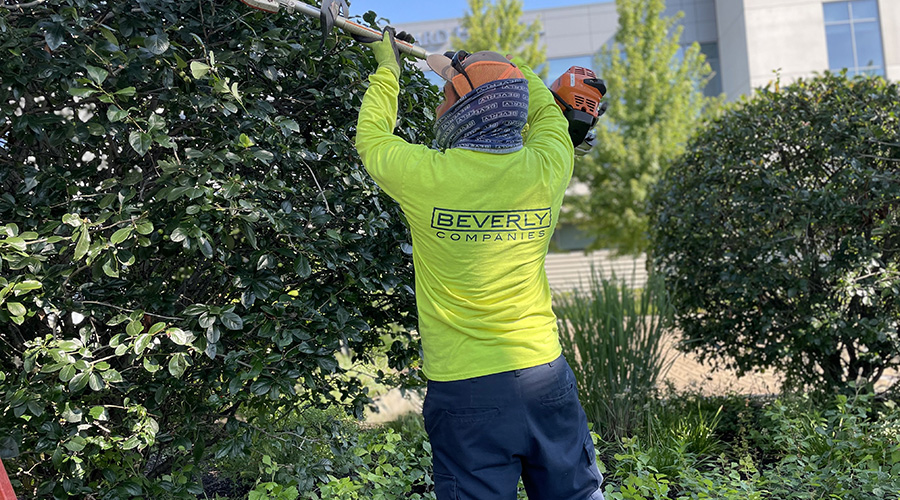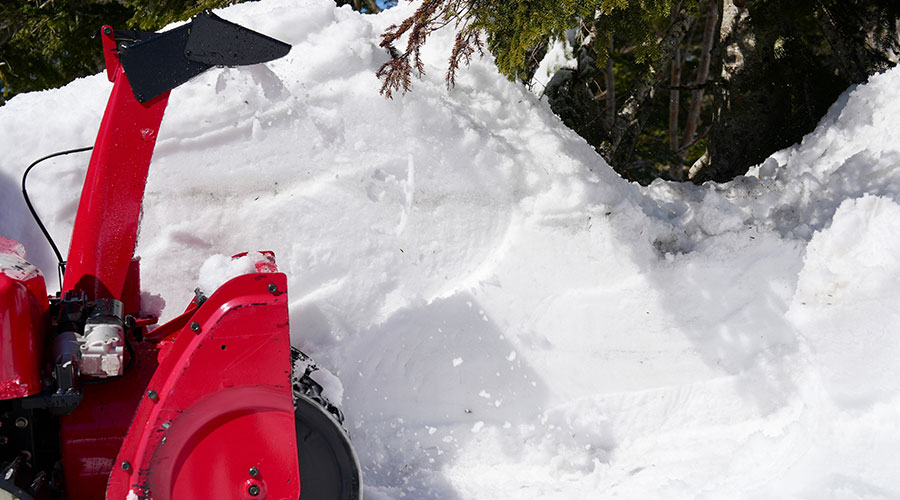Equipment options: A closer look
Grounds operations for institutional and commercial facilities continue to rely more heavily on utility vehicles for essential tasks. In response, manufacturers continue to expand their line of products to meet user demand for power and versatility.
Many manufactures offer utility vehicles suitable for grounds maintenance work. Each manufacturer has 5-15 models to from which to choose, and most of them also will customize a vehicle. The possibilities seem endless.
“When it comes to selecting a utility vehicle, it is a lot like selecting a new car,” says George Van Haasteren, CGM, director of grounds and transportation at Dwight-Englewood School in Englewood, N.J. “It all depends on what you are looking for and the features each model offers.” Identifying needs is the essential first step says Kevin O’Donnell, superintendent of grounds at Villanova University.
“There are a lot of options out there,” he says. “We looked at what would fit our needs best. At Villanova, the grounds, maintenance and catering departments went together to find one type of vehicle that would fit all of our needs. We choose more of a utility cart, a mini-pick up. We now have 35 of these utility vehicles.”
O’Donnell and Van Haasteren both suggest managers start the specification process by making a list of tasks the vehicle will perform, along with desired options and features. Then start looking at available models and costs, working with the budget to choose the most cost-effective vehicle.
Power Alternatives
Utility vehicles are equipped with gas or diesel engines ranging from 8-34 horsepower (hp). Some models offer high-flow hydraulics or additional power packs for use with attachments that require more power.
Electric-powered models can be effective in areas where noise and pollution are concerns. O’Donnell’s department has started using electric-powered vehicles and will continue to do so.
One manufacturer offers an electric vehicle that can travel up to 25 mph, while providing more than 40 miles in range. Its full-size deck provides more than 147 cubic feet of cargo space to carry up to 1,500 pounds, and it is specifically designed for off-road applications. The manufacturer claims this vehicle can reduce operating and maintenance costs by more than 40 percent. Some models support a propane attachment so the vehicle can run on propane instead of gas or diesel fuel.
One overseas manufacturer offers utility vehicles that run on alternative power sources, including solar balance, solar electric, plug-in electric, hybrid, and solar hybrid. And a domestic manufacturer produces an electric vehicle that can transport up to 10 people, carry up to 21⁄2 tons, tow up to 20,000 pounds, and travel 25 mph.
“Handling large payloads is another added feature that makes utilities more cost effective,” Van Haasteren says. “Cargo containers on these machines can hold anywhere from 15 to 25 cubic feet and more than one-half ton in weight. Towing capacity for utility vehicles can reach up to 4,000 pounds.”
Also, speed might be an issue for some managers. After all, these vehicles can save crews from walking or from driving larger vehicle in areas where it is dangerous or damaging to the landscape. The traveling speed on most of these vehicles is 12-25 mph. The fastest model can reach speeds of 44 mph.
Size and Maneuverability
Smaller than pick-up trucks but larger than all-terrain vehicles, utility vehicles can travel in remote areas, over rough terrain and through tight quarters unreachable by pickups.
“About 13 years ago, we started to switch from full-size pickups and vans to the smaller utility vehicles,” O’Donnell says. “We are not driving long distances anyway, and the smaller vehicle offered greater opportunity for transportation around our very congested campus.”
Adds Van Haasteren,”Turning in tight areas is made easier with these vehicles. Some models have a turning radius of as little as 5 inches and up to 10 feet or more.
Some vehicles are even compact enough to fit in the back of a pickup truck. If users will need to transport the utility vehicle between sites, managers must make sure before purchase that it fits on the trailer or bed of the pick-up. Also, double-check that users can easily haul the vehicle and its attachments. Most vehicles are not legal to drive on the street.
“Ground clearance is another consideration when deciding on a utility vehicle. Whether your vehicle will operate under normal conditions or rough terrain, it is important that you have sufficient clearance. Newer models have clearance range from 5 inches up to 9 inches. Also, rack-and-pinion steering, power steering, improved shock absorbers, independent front suspension, and independent rear suspension make today’s models easier to handle.”
Managers must carefully consider the type of terrain on which a vehicle will operate. Utility vehicles are available in two-, four-, and six-wheel drive, so if operators regularly travel over rough terrain, a four- or six-wheel drive model might be the most practical option. Some models offer automatic four-wheel-drive, and one manufacturer is producing an all-wheel-drive vehicle.
Managers also have options when it comes to selecting tires. The key is to purchase tires that best fit the driving terrain. Flotation tires for turf, hard-surface-pavement tires, and mud or all-terrain are all available options.
Safety
Safety is always a top priority in grounds care. Utility vehicles are designed to travel in areas standard vehicles cannot, and those areas might include rough terrain and many pedestrians. So managers should never sacrifice safety for convenience.
Roll-over-protection systems are standard on many vehicles, as are shoulder and hip restraints for the driver and passengers. One manufacturer even includes a governor that limits the vehicle’s top speed to 25 mph.
Some models include headlights, turn-signal lights, reverse warning indicators, a windshield, and canopy as safety features. And additional features, such as front disc brakes, tilt steering wheels, steel cabs, and even weight distribution, can further improve utility vehicles’ overall safety.
Versatility and Flexibility
Many new utility vehicles are designed to handle a range of attachments, making them even more flexible. Popular attachments include sprayers, spreaders, hydraulic dump beds, toolboxes, pressure washers, air compressors, groomers, topdressers, cabs with heater, debris blowers, vertical lifts, hitches, and snow plows. But prior to purchase, managers need to carefully consider attachment needs and options.
“Some vehicles are made to handle attachments from other manufacturers, while others only support attachments made by the original manufacturer,” Van Haasteren says.
Says O’Donnell, “Our vehicles have cab enclosures with heat. That feature was a main consideration for us because we use these all year round. Some of our vehicles have enclosed boxes that can haul tools, parts and food for our catering department. We also have vehicles that can haul mulch or plow snow.”
Managers also need to decide beforehand whether hauling passengers or cargo is the top priority. Utility vehicles typically carry two or four passengers, but today, some four-passenger vehicles also can carry a substantial amount of cargo.
Costs and Savings
Utility vehicles generally cost less than pick-up trucks and work vans. Most range in cost from $6,000 to $10,000, but larger models can cost $25,000. But managers should weigh cost against savings. O’Donnell says that since switching to utility vehicles, his department has been able to save a substantial amount of money.
“The utility vehicles cost about two thirds the cost of a pickup and use much less fuel,” he says.
Van Haasteren encourages managers to contact dealers of models in which they are are interested and ask them to bring a vehicle to the work site for a test drive. This move enables the department’s operators to test the machines where they will be used.
Among their considerations should be durability, easy of use, comfort and stability. During the visit, a mechanic also should examine the vehicle, checking for ease of maintenance, as well as durability.
As with any major equipment purchase, managers are most likely to end up with the best purchase by getting department employees on board during the research and product-testing phase.
Related Topics:











